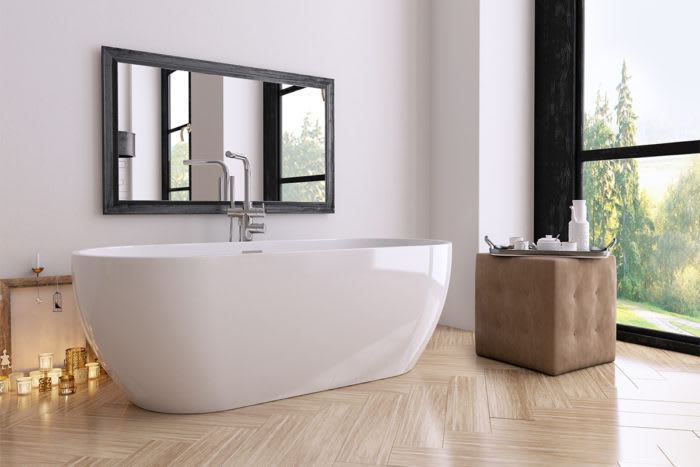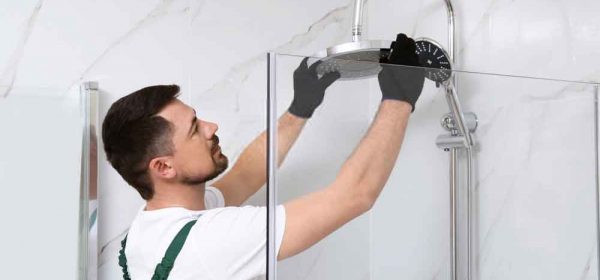In this article in the next paragraph you can discover some superb information and facts with regards to Hiring a Plumbing Expert.

Acrylic baths, shower trays, as well as other acrylic restroom ware have ended up being much more common in bathrooms in recent times. Thanks to modern chemistry we currently have choices to enamel and also ceramic products for shower room fixtures. These include different polers and plastic products. Though not as long lasting and classy as enamel as well as porcelain baths and components, they are extra cost effective as well as serve pretty much the very same standard function. These products are simple to manufacture, shop, as well as transport as well as in the incidence of damages, they are quickly repaired. Some typical examples of damages to acrylic shower room fixtures consist of discoloration, cracks, openings, etc. Allow's take a look at several of these issues and fast ways of fixing them.
Bath Staining
With long term use of acrylic baths comes discoloration or staining. While some spots can be gotten rid of conveniently, using special chemicals, others require that the bath be resprayed. Aromatherapy oils loosen up the dirt in some cases consequently bring back the bathroom to its previous glory.
Chemical Reactions
Sometimes, people try to paint the whole surface area of their acrylic bath by themselves either because they do not such as the shade to hide acnes. You ought to never use paint remover on acrylic bathrooms. Paint eliminators do not respond with the surface of metal baths, they damage acrylic bathrooms irreversibly.
Scraped shower or bath surface
Polymer restroom components are not abrasion-resistant like enamel ranges. Being a very soft product, acrylic scrapes can even be hidden without finishing or filling. For these, you need to seek expert help for your bathroom repair work.
Cracked Polymer Baths
The Click For More Info lifespan of acrylic as well as fiberglass bathrooms is up to 15-20 years for shower frying pans and baths, normally. Cracks in an acrylic shower tray are most likely amongst the most convenient problems to fix for a fixing specialist. This is the exact same for PVC, material, and other such products.
Polymer baths, shower trays, and various other acrylic washroom ware have ended up being much more typical in washrooms in recent times. With prolonged use of acrylic bathrooms comes staining or staining. You ought to never ever make use of paint eliminator on acrylic baths. Paint removers do not react with the surface area of steel baths, they damage acrylic bathrooms irreversibly. The lifespan of acrylic and fiberglass bathrooms is up to 15-20 years for shower pans and baths, usually.
How to clean Acrylic shower
USE THESE NON-ABRASIVE CLEANERS
We recommend that you clean your acrylic bathing product made of Delta ProCrylic or Acrylic with Innovex Technology with non-abrasive soaps and cleaners, such as:
Dishwashing detergent Power Bathroom Cleaner CLR® Bath & Kitchen® Cleaner Formula 409® All-Purpose Cleaner Iron Out® Rust Stain Remover When it’s time to clean, always use a terry cloth towel, soft cloth or sponge to avoid scratching the acrylic surface. Don’t use abrasive scrubbing pads, steel wool or sponges, cause permanent damage to the acrylic material. If you use a drain cleaner or clog remover, be sure to rinse thoroughly with water so no product is left standing near the drain.
Some chemicals and cleaners may deteriorate acrylic surfaces, causing cracks and, potentially, property damage. To avoid this, don’t use cleaning products that state on their label that they are not suitable for use on Acrylic, ABS, Polystyrene or Plastic. Be sure to check the label of any product before you apply it to the surface; it’s easier to avoid damage than to try to remedy it.
DO NOT USE THESE CLEANERS
Chemicals we do not recommend using to clean acrylic showers/tubs:
Solvents (turpentine, lacquer thinner, mineral spirits, paint thinner, MEK, xylene, acetone, naphtha, etc.) Simple Green® All-Purpose Cleaner Pine-Sol® Original Scrubbing Bubbles® Cleaner Tilex® Bathroom Cleaner The Works® Tub & Shower Cleaner Lysol® with Hydrogen Peroxide Multi-Purpose Cleaner Windex® Vinegar Multi-Surface Cleaner Sealant Application Tips
When you’re ready to apply sealant, a little planning goes a long way. Pick up some painter’s tape and use it to mask off the seam to help make cleaning up easier. When you’re applying the bead, use a constant, steady speed to avoid an uneven finish. Use a caulk tool or a plastic spoon to work the sealant into the joint. Wetting the tool with denatured alcohol will help create a smooth finish. Follow the directions on the back of the tube for cure time.
Certain chemicals and cleaners may deteriorate acrylic surfaces, causing cracks and, potentially, property damage. After you’re finished applying it, clean up the product surface and remove any excess sealant with denatured alcohol. Don’t use solvents (turpentine, lacquer thinner, mineral spirits, paint thinner, MEK, xylene, acetone, naphtha, etc.) that can wreak havoc on an acrylic surface.
With a little care and consideration, you can prevent damage to your acrylic shower or tub. Keep a supply of soft cloths handy and remove any damaging products or abrasive scrubbing items from the bathroom to ensure they aren’t around when it’s time to clean.
https://www.deltafaucet.com/design-innovation/inspiredliving/how-to-clean-acrylic-shower

I was shown that article on Hiring a Plumbing Company from a good friend on another web property. Are you aware of another individual who is occupied with the topic? Why not promote it. Thank you for your time. Visit again soon.